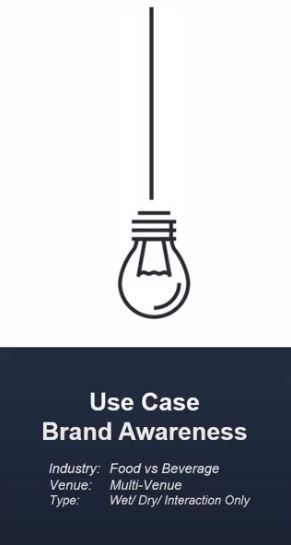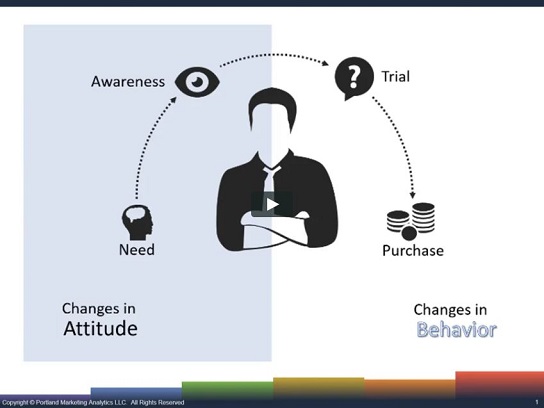Using Consumer Awareness Benchmarks to Develop Revenue Generating Experiential Messaging
Using Brand and Consumer Awareness Benchmarks for Campaign Development and Greater Impact
![]() Video Length: 2 minutes 47 seconds
Video Length: 2 minutes 47 seconds
Here we are going to look at a use case scenario for the Food and Beverage industry with a focus on multiple venues. And in doing so we’re going to see how a campaign’s creative strategy can be developed using consumer awareness benchmarks. But first, we’ll start with a quick review of why marketing works in the first place.
Table of contents

Calculate and Value Five Types of Experiential Impressions
This tool has been designed to assist with the value calculation for five impression types: Mobile Impressions, Event Impressions, Viral Word-of-Mouth, Organic Media, and Paid Media.
Frequently Asked Questions
Consumers in the early stages of a purchase cycle need to identify with the problem the brand solves. Above all, consumers need to be aware that the brand is a legitimate solution to their need. Because of this, education-based marketing strategies are often the most appropriate approach.
Consumers in the later stages of a purchase cycle need to overcome barriers to trial. Therefore, marketing that focuses on helping consumers overcome purchase barriers or focuses on usage occasions will often be the most appropriate approach.
Video Transcripts – Consumer Awareness Benchmarks
Estimated reading time: 5 minutes
Above all, we are going to look at a use case scenario for the Food and Beverage industry with a focus on multiple venues. And in doing so, we’re going to see how a campaign’s creative strategy can be developed using benchmarks. But first, we’ll start with a quick review of why marketing works in the first place.
00:34 Developing the Right Experiential Marketing Messaging

Firstly, we have this target consumer. And the reason why 100% of this consumer isn’t buying the brand is that they’re stuck somewhere in the purchase cycle. To clarify, the role of marketing, any marketing really, is to unstick them. Accordingly, this purchase cycle aligns closely with brand awareness. Therefore, good marketing will use education-based strategies to change the attitude and unstick consumers stalled in the early stages of the purchase cycle.
And it’ll be promoting usage occasions and overcoming price or convenience barriers that will change behavior and move consumers through the later stages of the purchase cycle. With this in mind, it becomes apparent how powerful it knows where consumers tend to be when developing a campaign strategy.
01:14 How Experiential Marketing Benchmarks Assist Creative Strategies
So how can we apply this knowledge to use benchmarks to develop stronger campaigns? For example, let’s say you’re advising a creative team working to develop campaign messaging for two new brand teams. One brand operates in the food industry, while the other is a nonalcoholic beverage.
As a result, every one of PortMA’s Industry Reports and BI Experiential Dashboard deployments has detailed consumer data on brand awareness by industry, venue type, demographic profile, and market. Therefore, using this information, we can quickly determine where consumers tend to be in the purchase cycle by any of these segmentations.
01:50 Early Stage Consumers Respond Best to Education-Based Marketing
Meanwhile, let’s do this for our Food and Beverage Brands to see if there are any insights. When we look at the brand awareness details for consumers during Food activations, we see that the tendency is for low levels of awareness. As we saw earlier, we call for education-based marketing. Looking at the details for consumer awareness trends during nonalcoholic beverage activations, we see that it’s much more mixed, with two-thirds having some previous awareness. Subsequently, it calls for usage occasion and offers-based marketing.
Using this direction as a starting point, an Account or Creative Director might advise their team to develop more information-based education campaigns for the food brand while focusing on usage occasions and offers for the beverage client. The creative team can now develop a run-of-show with a stronger likelihood of having the desired impact because they had benchmarks to help them get started.

